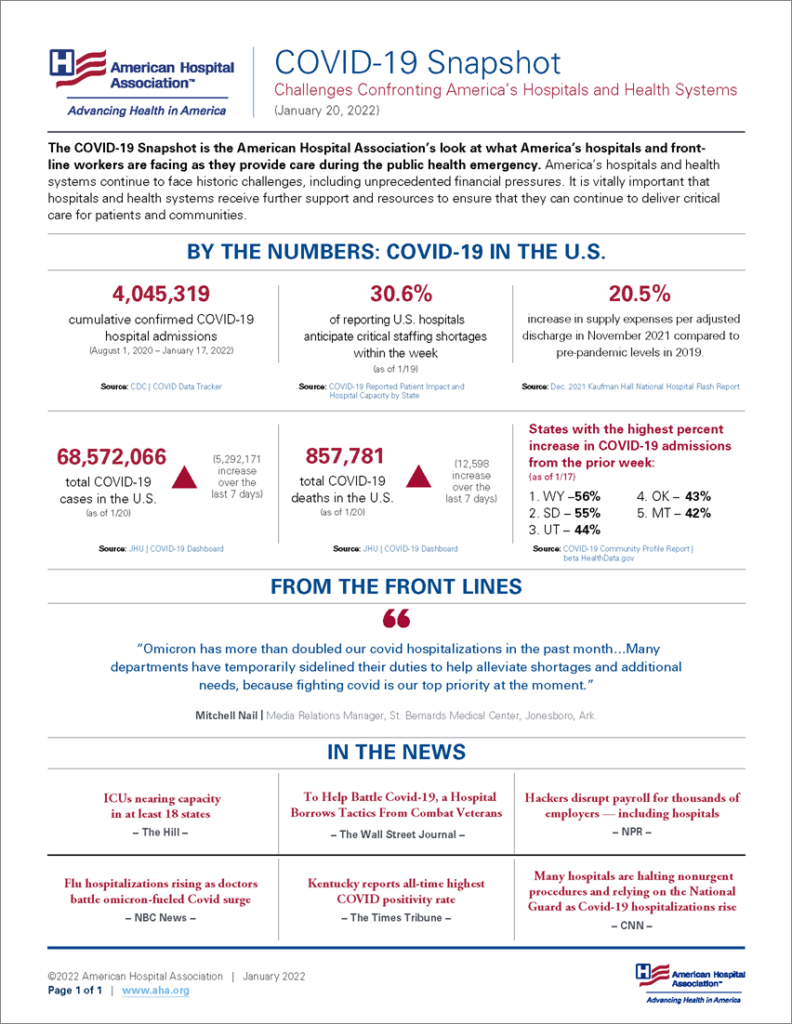Midweek Update

From Capitol Hill —
Today, the Senate invoked cloture on the resolution to continue funding the federal government until March 11 by unanimous consent. Consequently, the new resolution should be approved by Congress tomorrow, which is the day before funding expires under the current resolution.
The House of Representatives has returned the correct version of the Postal Reform Act, H.R. 3076, to the Senate, and the Senate has had the correct version read twice. We will have to wait and see if anything happens with the bill tomorrow.
In the meantime, check out the Congressional Research Service’s February 11, 2022, report on the Postal Reform bill approved by the House, H.R. 3076. In the FEHBlog’s view, a unique feature of the House version compared to earlier versions is that the bill destined to become law creates a transitional Open Season. The Transitional Open Season will auto-enroll those Postal employees and annuitants who failed to transfer over to the PSHBP in the 2024 Open Season for the 2025 plan year. The receiving PSHBP plan will be the lowest premium nationwide PSHBP plan that is not a high deductible plan and does not require dues payments. Also, the House version makes the Postal Service financially responsible for the late Medicare Part B enrollment fees otherwise owed by the Postal annuitants with Part A only who take advantage of a special Part B enrollment period in 2024.
Following up on Robert Califf’s second confirmation as Food and Drug Administrator yesterday, STAT News identified the six major drug approval decisions awaiting him, including Pfizer’s toddler COVID vaccine, the Novovax Covid vaccine, and Alzheimer’s Disease treatments. Good luck, Mr. Califf.
Also among those drug approval decisions awaiting Mr. Califf is a Covid treatment discussed in Bloomberg
After omicron weakened some of the defenses that doctors have against Covid, an experimental treatment being developed by Novartis and a small Swiss biotech partner holds some promise as a new therapy.
Last week, Novartis sought emergency approval from the U.S. Food and Drug Administration for an intravenous drug, called ensovibep, that’s similar in some ways to monoclonal antibody treatments. However, the way it works is significantly different, which might allow it to succeed where antibody therapies fail against omicron.
The compound uses tiny proteins to attack the coronavirus’s spike protein in not just one, but multiple places. That appears to give it a leg up in fighting the virus even as it mutates.
In other federal leadership changes, STAT News adds
President Joe Biden is replacing a top science adviser who resigned under a cloud with two individuals who will split his duties on an interim basis.
Biden is tapping [Alondra Nelson, ]a deputy in the White House science and technology office along with [Dr. Francis Collins] the recently retired director of the National Institutes of Health, according to a personal familiar with the president’s plans.
From the Omicron front, Beckers Hospital Review tells us
The COVID-19 omicron subvariant BA.2, dubbed “stealth omicron,” has spread to at least 74 countries and 47 states across the U.S., according to data from outbreak.info.
Four more updates:
1. BA.2 is most prevalent in HHS’ region 3, which includes Pennsylvania, West Virginia, Virginia, Delaware and Maryland, according to CDC data.
2. Region 7, which includes Iowa, Kansas, Missouri and Nebraska, had the lowest percentage of BA.2 cases last week, according to CDC data.
3. BA.2 currently accounts for 3.9 percent of total COVID-19 cases in the U.S., with omicron subvariant BA.1.1 accounting for 73.2 percent of cases, CDC data shows.
4. A South African study analyzing nearly 100,000 COVID-19 cases found that BA.2 doesn’t cause significantly more severe illness than the original omicron variant, Bloomberg reported Feb. 16.
From the Covid vaccine front, The American Medical Association reports
The New York Times (2/15, Anthes) reports infants born to mothers who “received two doses of an mRNA coronavirus vaccine during pregnancy are less likely to be admitted to the hospital for COVID-19 in the first six months of life, according to a new study from the Centers for Disease Control and Prevention.” The study found that “overall, maternal vaccination was 61% effective at preventing infant hospitalization.”
Reuters (2/15, Mishra, Steenhuysen) reports, “That protection rose to 80% when the mothers were vaccinated 21 weeks through 14 days before delivery.” Meanwhile, the “effectiveness fell to 32% for the babies whose mothers were inoculated earlier during pregnancy.”
The Hill (2/15, Sullivan) reports the study used data “from 20 pediatric hospitals in 17 states, from July 2021 to January 2022.”
From the Covid front, Fierce Healthcare reports
Anthem has launched a new pilot that aims to offer a digital concierge care experience to members recovering from COVID-19.
Through COVID Concierge Care, eligible members can access an app and fill out a questionnaire that tracks their symptoms on a daily basis. They can connect with a clinician via secure, two-way text-based messages in the app or via text or email.
In addition, based on their reported symptoms, members can access evidence-based educational tools and wellness content to help them self-manage their conditions. For example, members can connect with breathing exercise guides to manage stress or health articles about their symptoms.
From the Covid vaccine mandate front, Federal News Network tells us
The Postal Service is laying the groundwork to track the vaccination and testing status of its workforce amid the COVID-19 pandemic, or any future public health emergency.
USPS, however, says it’s only giving notice as it prepares for “potential future contingencies,” and is not, at this time, updating its COVID-19 vaccine or testing requirements, nor is it seeking to collect data on the vaccination status of its workforce.
In healthcare business news, Healthcare Dive informs us
The Department of Justice is preparing a lawsuit to block UnitedHealth from purchasing Change Healthcare, according to a new report, as regulators take a more aggressive stance on checking consolidation in the healthcare industry.
According to Dealreporter, which cited sources familiar with the matter, UnitedHealth and Change are expected to meet with the DOJ soon for a “last rites” meeting on the proposed deal, first announced early last year. Despite UnitedHealth and Change exploring divestitures to assuage antitrust concerns, the DOJ has not found any that would make the deal acceptable, according to Dealreporter’s sourcing.
From the health savings account front, Health Payer Intelligence offers nine best practices for high deductible health plan design based on a recent report from the National Pharmaceutical Council (NPC) and Gallagher.
From the antibiotic overutilization front, AHIP lets us know
A study published in the CDC’s Morbidity and Mortality Weekly Report found 41% of antibiotic prescriptions for Medicare Part D beneficiaries in 2019 were written by just 10% of prescribers. Researchers found nearly half of these high-volume prescribers practiced in southern states, and they had a median antibiotic prescribing rate of 680 per 1,000 beneficiaries, compared with 426 per 1,000 beneficiaries among low-volume prescribers.









